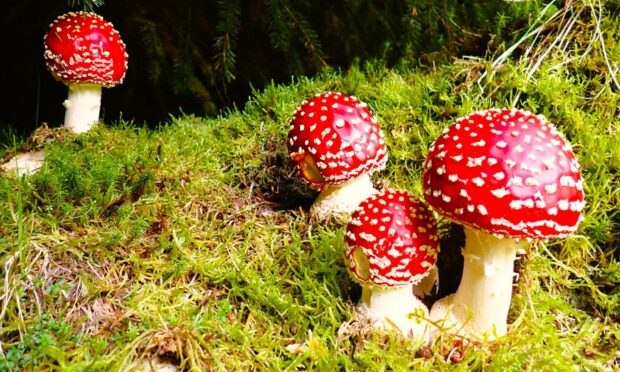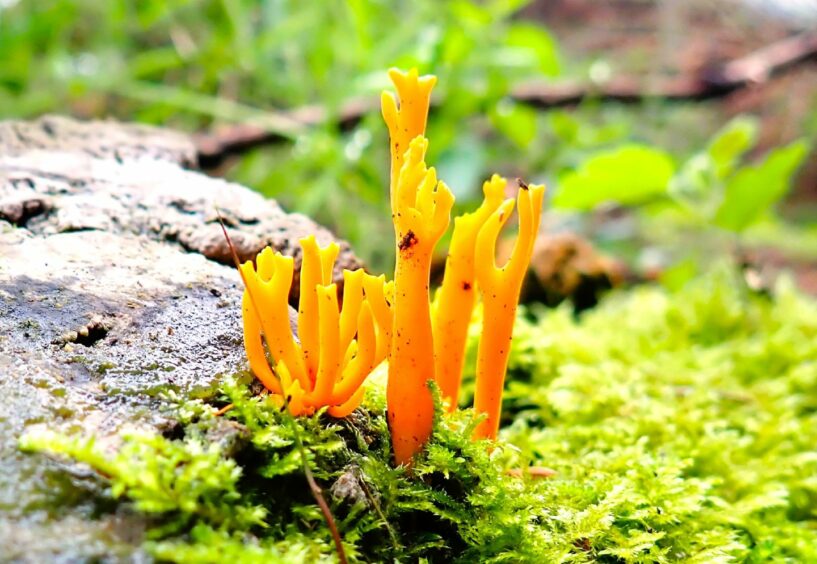Over the past fortnight I have become consumed with passion for the colourful fungi which scatter the damp, dark recesses of a forestry plantation in the hills near where I live.
It was the fly agarics which catalysed this fungal fascination, for there is surely no other lifeform in the land that can match their glistening, scarlet of vibrancy.
First, the fly agarics appear as small dome-like protuberances, bright red with a sprinkling of white-flaked spots, then the stalk appears, followed by the unfurling of the cap like a sparkling, red umbrella.
The speed of growth is astonishing – and over the space of just three days, I recorded one fly agaric increasing an incredible two inches in height each day, a spurt of bursting development which transforms the appearance of the forest floor overnight.
Fungi clusters
In some parts of the plantation, colourful fungi clusters had materialised, comprising groups of fly agarics, shiny brown ceps and orange-hued chanterelles.
These clusters created wild fungi gardens, blush tapestries of varied tone, and a reminder of nature’s never-ending capacity to surprise.
Of course, there is so much more to fungi than their diversity and colour, for they are a fundamental pillar of life.
Fungi are decomposers and recyclers that return dead material back into the soil in a way that can be reused by other organisms.
They are also enablers of life by forming mutually beneficial relationships with plants, which aids their growth and vitality.
Fungi provide food for humanity and are the building blocks of medicines such as penicillin.
Without fungi, our world would be an impoverished and hostile place.
Diversity of form
Their diversity of form is a testament to the creative forces of nature, and on a woodpile in this hill forest, I found an orange, encrusting fungus, which after a bit of head-scratching, I identified as raspberry slime mould.
In a nearby wood the previous week, I had stumbled upon yellow stagshorn fungus that glowed like a nugget of gold from a tree stump.
This was a true citron gem, with a small and intricate branched form that was a million miles away from the traditional shape of a toadstool.
These fungal finds also got me thinking about commercial conifer plantations.
The conventional wisdom among many environmentalists is that they are bad for biodiversity, but this is a view I’ve never fully subscribed to.
True, the ground beneath a thick blanket of towering spruces is bare and largely devoid of life, but plantations are typically criss-crossed with access tracks that act like sunny glades, bursting with wildflowers and insects.
Once a plantation matures and felling commences, a mosaic habitat is produced of rotating sun-kissed open areas and new plantings.
Certainly, many parts of a mature conifer plantation are more biodiverse than heavily grazed open hill, and fast-growing plantations can play an important role in carbon capture.
For me, at this time of year, it is their proliferation of fungi which inspires; beauty and brilliance wrapped in a wondrous cloak of magical colour.















Conversation